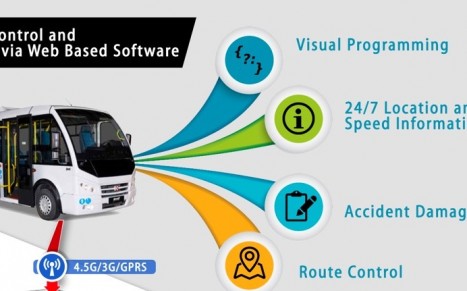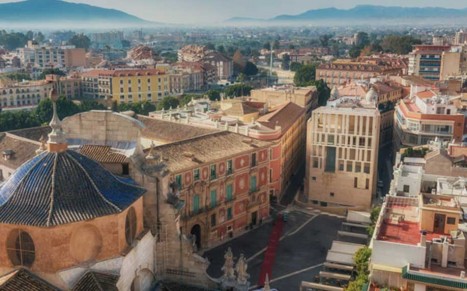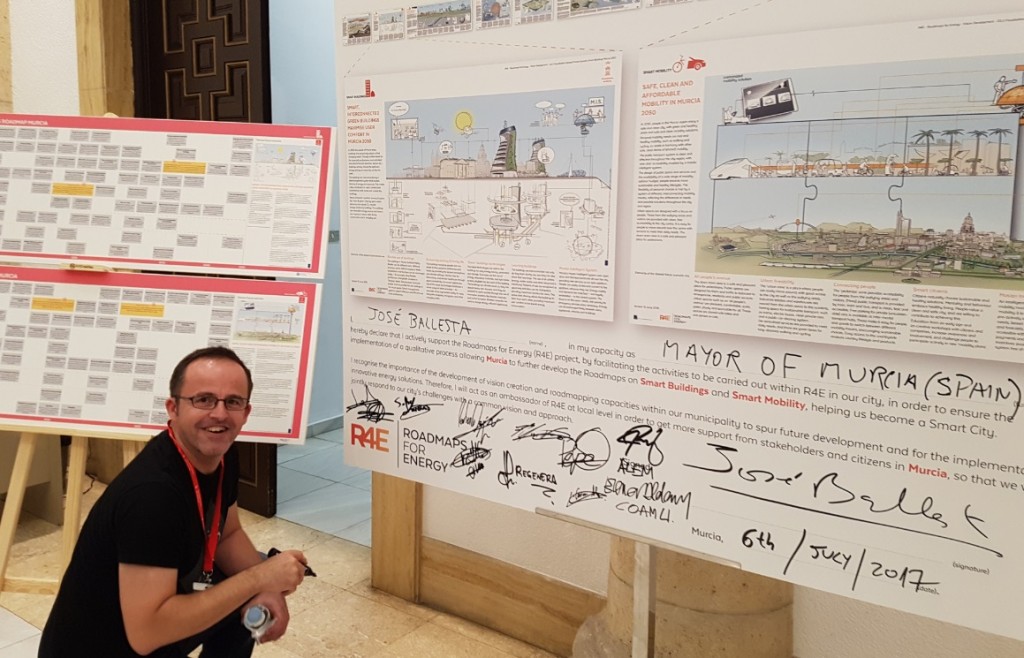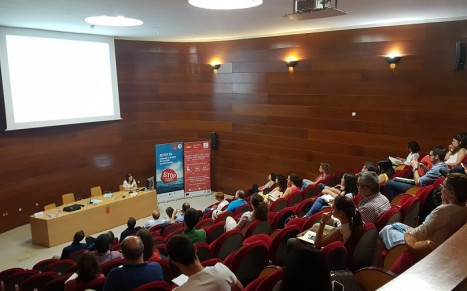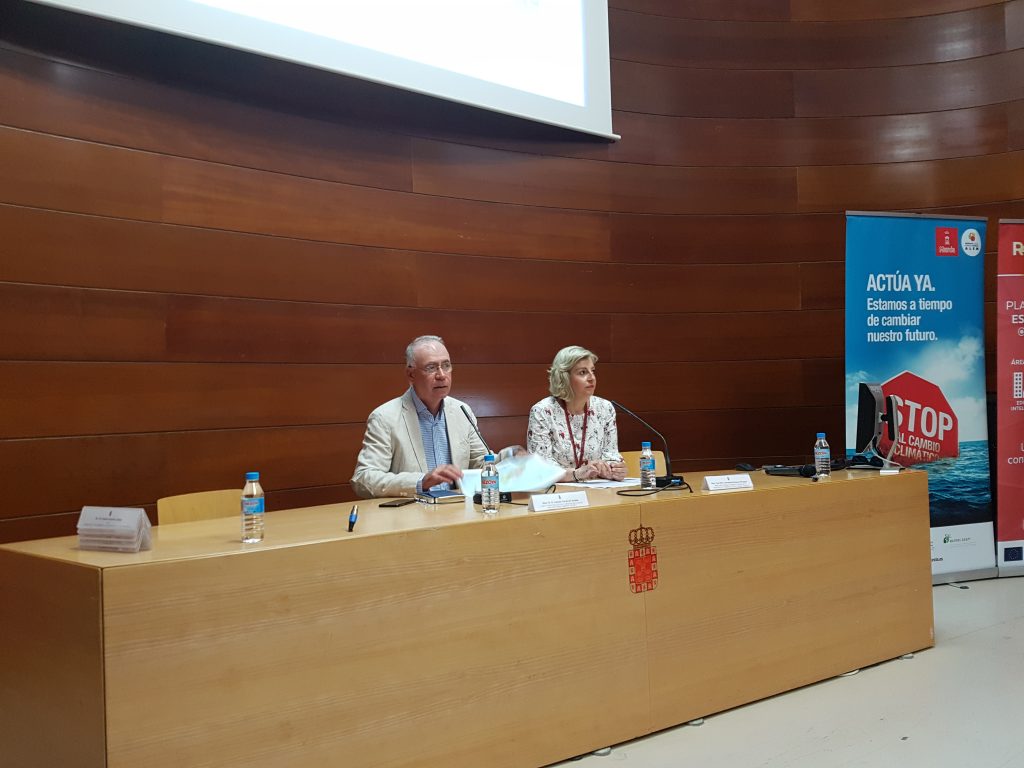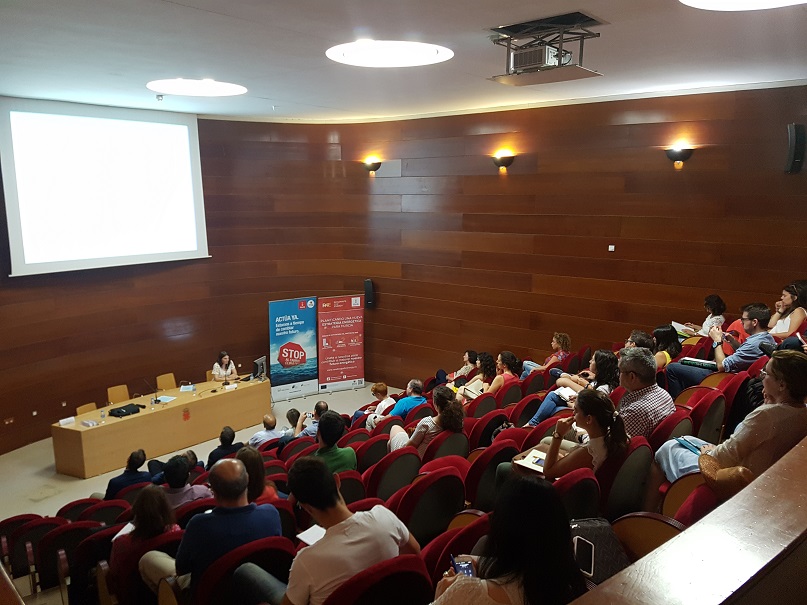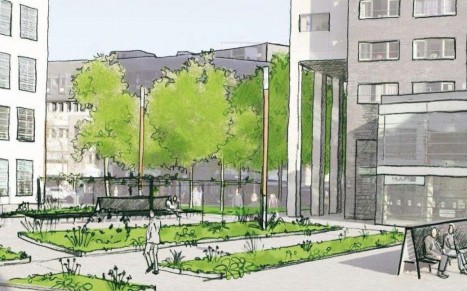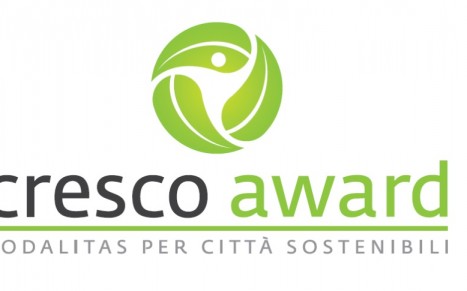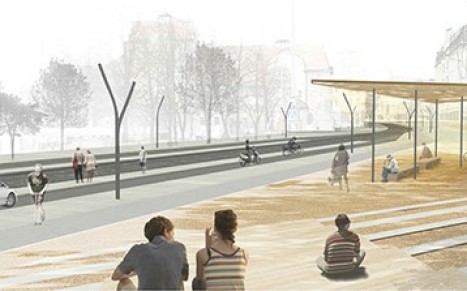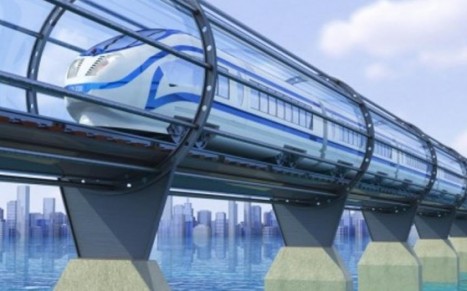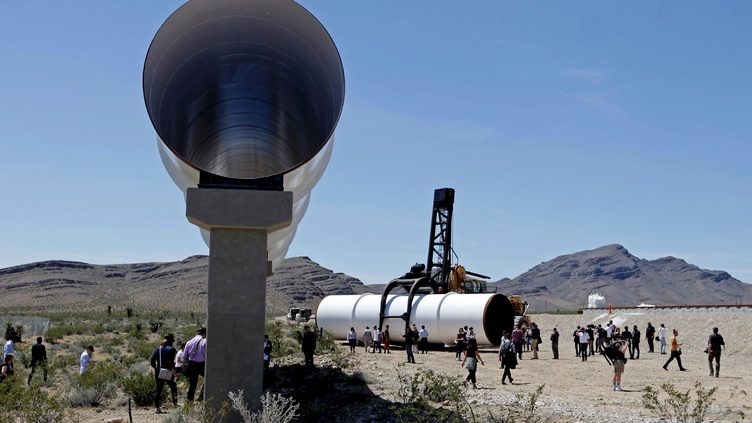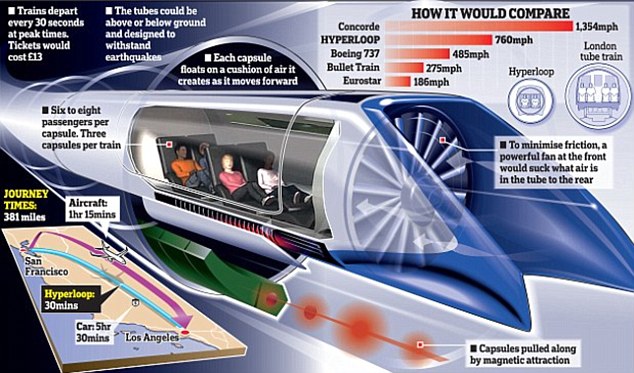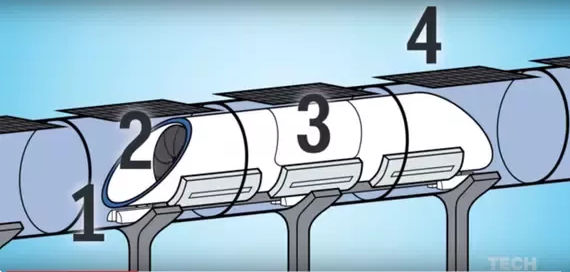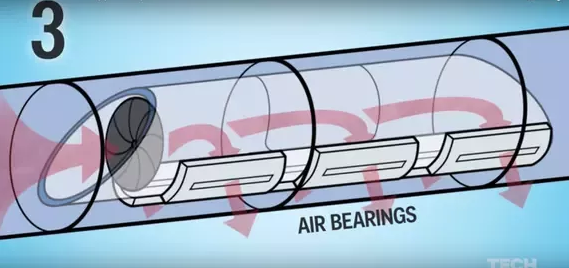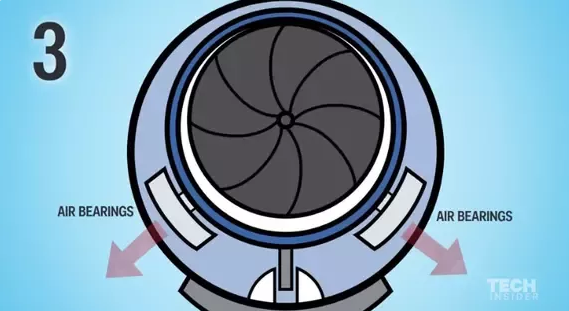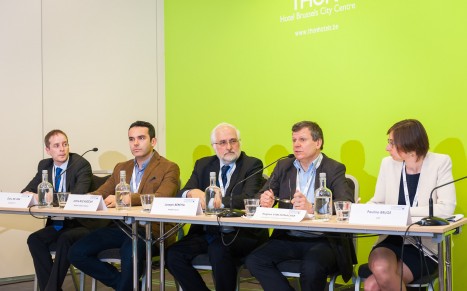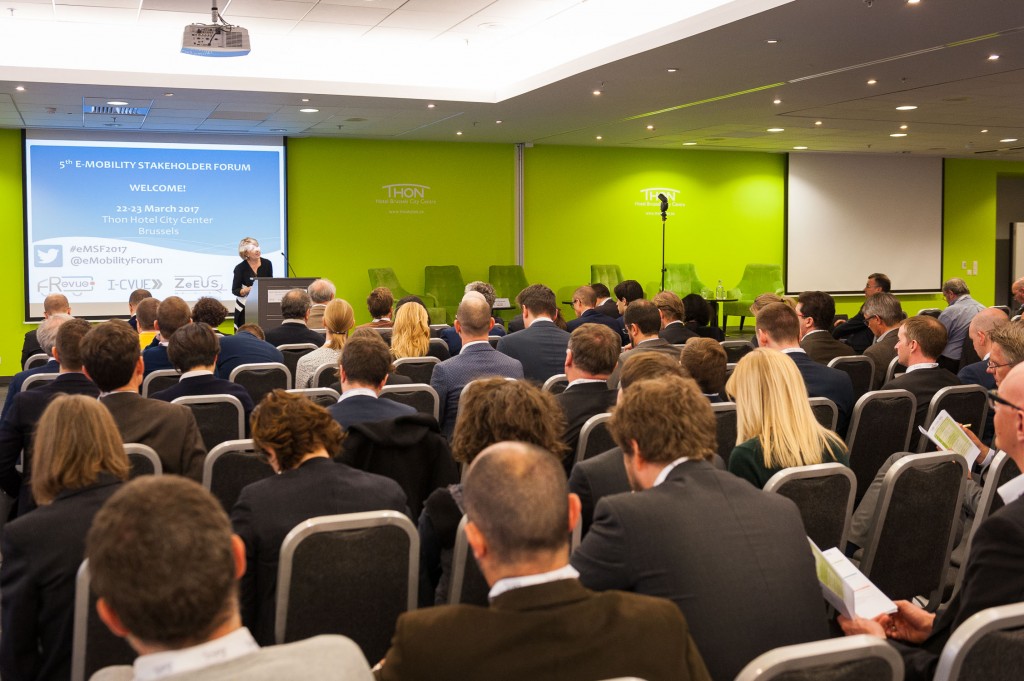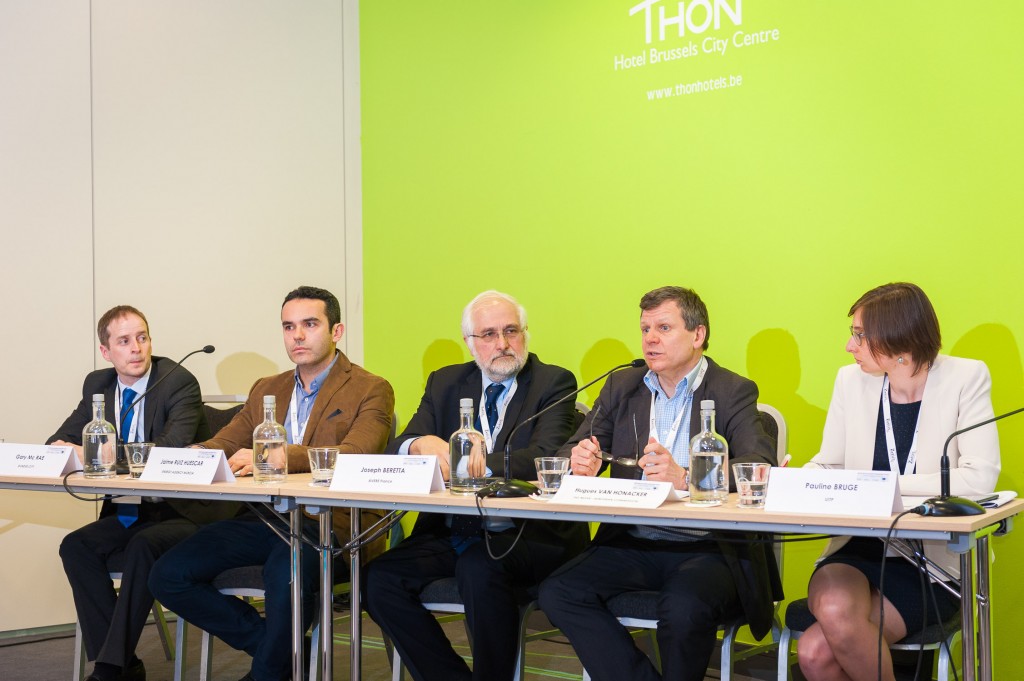Blog : 52s Posts Found
New Road Guide in İstanbul and Marmara Region: “İBB Navi”
New Road Guide in Istanbul and Marmara Región: “iBB Navi”
Navigation in Marmara Region is Easier for Everyone with “İBB Navi”
IMM’s Department of Transportation deployed a new mobile navigation application called “İBB Navi” for a sustainable and effective traffic management in Marmara Region. “IBB Navi” navigation app which is developed by the cooperation of IMM’s local and international partners was put into service at the end of April 2017.
“İBB Navi” helps users reach their destinations as soon as possible by following the routes created using live traffic information in all cities in Marmara Region, especially in İstanbul.
Thanks to İBB Navi, citizens of Istanbul and tourists can manage their time in traffic more efficiently and plan their journeys smartly considering both driving and public transport options in İstanbul. They can see alternative routes, total distance and estimated time of arrival in İBB Navi. Traveling in Marmara Region will be very easy for everyone with “İBB Navi” which supports navigation in Turkish, English, German, French, Arabic and Italian languages.
İBB Navi has many advantages compared to other navigation apps on the app markets some of which are as follows:
- Integrated with all public transport modes in Istanbul
- Access to Istanbul Metropolitan Municipality’s live camera videos
- Access to information of pharmacies on duty
- Parking lot locations and live occupancy information of parking lots in Istanbul
- Possibility to navigate without internet access (offline navigation support)
- Multi-language support
- Integrated with Istanbul Metropolitan Municipality’s Transportation Systems (traffic information, modes of transportation, etc.
For more information about “İBB Navi”, please visit: http://tkm.ibb.gov.tr/ibbNavi
Smart monitoring system in public transport of Istanbul
Smart monitoring system in public transport of Istanbul
Safer Public Transport with in-car Surveillance Cameras – Istanbul
Smart transportation systems, smart city projects, monitoring and control systems, data storage systems are some of the “Smart City Technologies” developed by IMM. IMM continues to put new projects into service which help make İstanbul the model metropolis in the world with revolutionary ideas in urban transportation. In line with its smart city vision, IMM has recently started installing surveillance cameras into taxis and minibuses serving in Istanbul.
All taxis and minibuses along with public transport vehicles will be remotely monitored and managed by “Public Transport Control and Management Center” of IMM. With this project, İstanbul Metropolitan Municipality aims to achieve below targets:
- Track public transport vehicles’ routes and locations,
- Have a “Safe Trip” which is always monitored by control operators,
- Have a public transport system which is coordinated by the control center during disasters and emergencies.
By means of those monitoring cameras, all kind of information and evidences will quickly be obtained regarding crimes. Thanks to Public Transport Control and Management Center software, it will be possible to control public transport vehicles, obtain 24/7 location and speed information of public transport vehicles, get accident and emergency information, and route information for public transportation vehicles.
IMM keeps working for the development of smart city concept and the improvement of public transport service quality and continues to support Police Department with its new projects.
More information about this project is accessible at http://tkm.ibb.gov.tr/corporate/news-and-announcements/smart-monitoring-system-in-public-transportation
Murcia: Signed Official statement R4E
Murcia: Signed Official statement R4E
The Murcia city Council signed the Official Statement of the R4E project last 6th july, 2017.
It has been a clear sign of the Municipal commitment to the results of the project. The team in Murcia chose the “Almudí” Palace to invite the main decision makers in the Murcia City Council where our Mayor , D. José Ballesta Germán, was the person in charge to sign the statement.
Together our policy makers we invited all the stakeholders that have had any role in the 3 workshops held in Murcia within the framework of the project in order to they could be witnesses of the solid willingness of the Municipality to keep on making progress on the roadmaps of Murcia for the Smart Mobility and Smart building areas designed during the project.
The event was also very useful and inspiring for the attendees and the stakeholders of the project because they had the opportunity to explain first-hand to our Mayor how they think the Municipality must face the coming challenges in terms of mobility and the required improvement of the energy efficiency. Apart from these insights, the stakeholders underlined how important is to have a close contact and a seamless relationship with the local council in order to create synergies and can progress at a faster pace facilitating the growth and development of the local technological business.
ALEM, the Local Energy and Climate Change Agency of the City of Murcia, under the Department of Urbanism, Environment and Huerta, directed by D. Antonio Navarro Corchón, was in charge of leading the event and provide specific explanations to the Mayor and the media among others so that all the attendees could have a clear idea of the particularities of the project. ALEM focused specially in the interesting and innovative methodology used during the project and the valuable contribution received from the stakeholders.
Finally we asked to the stakeholders who could attend the event to sign toghether with the mayor in the official statement as a gesture to endorse the work done so far in the project and their willingness to keep on collaborating in the future.
The Murcia City Council recognizes the Carbon Footprint as a key instrument in the fight against Climate Change.
The competitive advantage and corporate social responsibility, two key aspects of the Carbon Footprint Days organized by the City of Murcia.
The main hall of the City Council has hosted the day of ‘Carbon Footprint as a competitive advantage and environmental responsibility in companies’ organized by the Department of Urbanism, and Environment of the City of Murcia in collaboration with the Ministry of Tourism, Culture and Environment.
The event was inaugurated jointly by Antonio Navarro, Councilor for Urban Planning and Environment and Consolación Rosauro Meseguer, General Director of Natural Environment of the Ministry of Tourism, Culture and Environment of the Region of Murcia.
This day, framed in the municipal program of Fight Against the Climatic Change, aims to provide the key aspects to calculate the Carbon Footprint of companies in order to give them a competitive advantage. The seminar, free and open to all interested parties, has addressed issues such as the carbon footprint, the tools for calculating it and the measures to reduce emissions.
In the Region of Murcia there are 17 organizations registered in the Carbon Footprint Registry, including the City of Murcia and the municipal company EMUASA. It occupies the tenth position by Autonomous Communities, emphasizing in first place the Community of Madrid with 111 inscriptions. That is why the public institutions want to promote this practice that undoubtedly brings important benefits for companies.
Antonio Navarro explained that obtaining this nationally recognized seal increases the competitiveness of the company by offering its customers additional added value, allows to know the levels of energy consumption of the company, and work for eco-efficiency when preparing a plan to reduce emissions that will allow the reduction of associated energy and economic costs. And the fact is that Climate Change is not only a matter of public administrations, it is also the responsibility of society as a whole.
Municipal Strategy to fight against Climate Change
The City of Murcia, through the ALEM Service, the Energy & Climate change Agency, is actively working on the fulfillment of the European commitments to fight against climate change, especially in the Covenant of Mayors for Climate and Energy, an initiative signed by our consistory in 2016, and which implies, among other commitments, the preparation of a Municipal Plan for Adaptation to Climate Change and a new Sustainable Energy Action Plan, both with a time horizon to 2030.
Within the framework of the “Acts against Climate Change” campaign, the ALEM service has already organized two editions of the “Carbon Footprint Calculation Workshop for SMEs”, which have allowed 20 Murcian organizations to acquire the technical skills to calculate for them. their Carbon Footprint. The City of Murcia recently obtained the “calculation” stamp of the MAPAMA, with a goal to 2020 to reduce 8% CO2 emissions, equivalent to 2% per year, which is 2,243 tonCO2 eq.
Achieving a part of the desired future scenario in Eindhoven
Achieving a part of the desired future scenario in Eindhoven
Together with Tampere (Finland) and Genova (Italy) Eindhoven succeeded to become a so-called “Front-runner” city in the Horizon 2020 call on Demonstrating innovative nature-based solutions in cities. The main subject of this call is to show how to make cities more c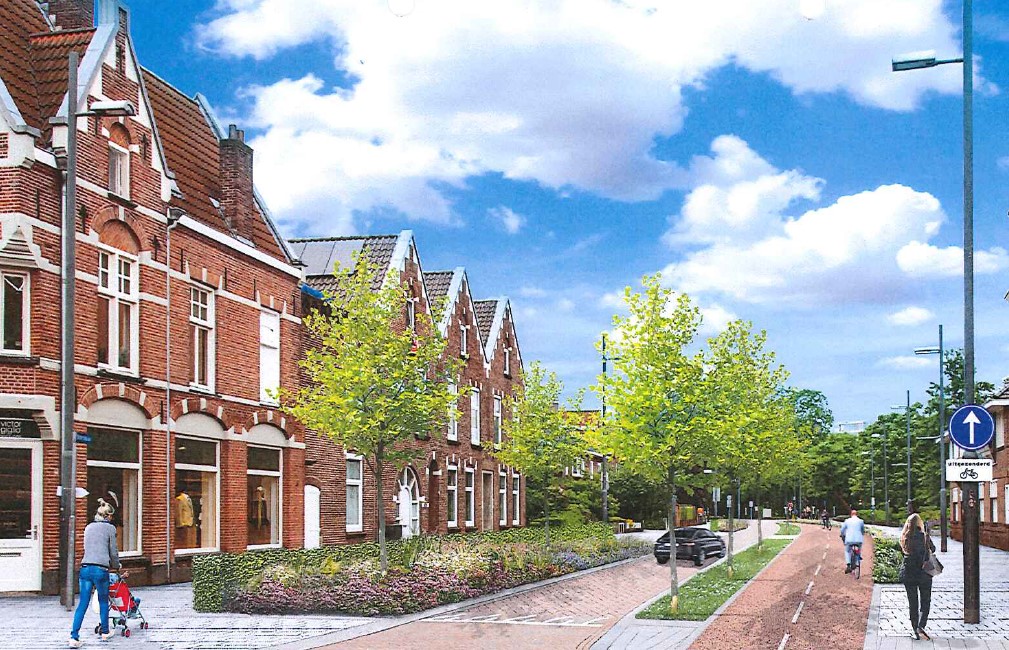 limate resilient by using Nature Based Solutions (NBS). Nature based solutions are basically solutions or designs inspired by nature. Changing a paved area into greenis only part of NBS. Discovering what can be added, for instance, to improve biodiversity is an element in the project.
limate resilient by using Nature Based Solutions (NBS). Nature based solutions are basically solutions or designs inspired by nature. Changing a paved area into greenis only part of NBS. Discovering what can be added, for instance, to improve biodiversity is an element in the project.
The EU project, called UnaLab, will be a collaboration of almost 30 partners, such as cities, institutes and companies. The demonstration cities (front-runners) have to realize projects to show the possibilities of the use of Nature Based Solutions. The projects don’t only aim to demonstrate innovative NBS solutions, but also aim to experiment together with stakeholders and experts. Front-runner cities will demonstrate in ‘living laboratories’ innovative, replicable and locally attuned nature-based solutions, which will be measured, both concerning technical as well social impact.
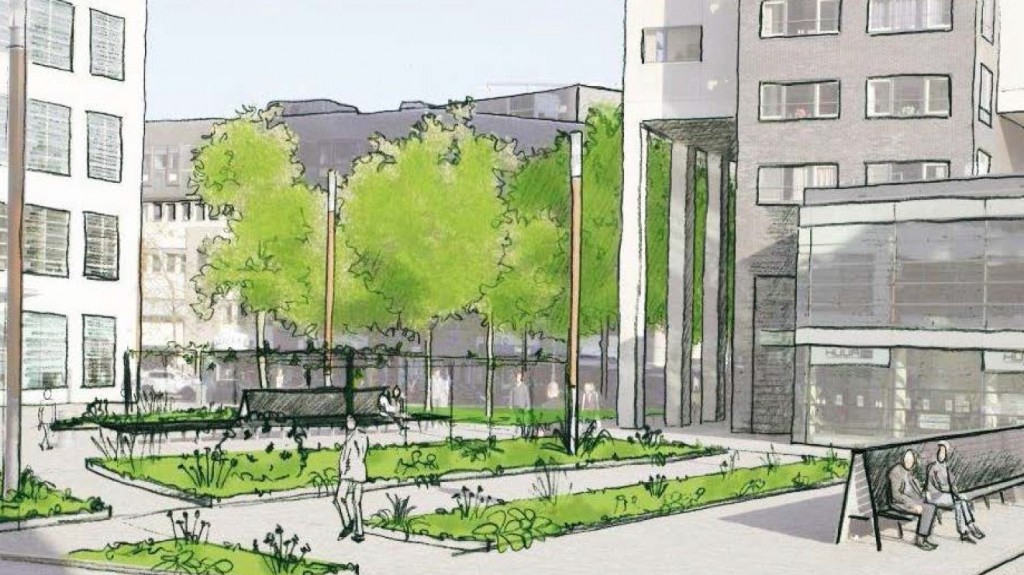
The public space of Eindhoven that will serve as ‘living laboratories’ within UnaLab, are all situated in the centre of the city and are about daylighting a stream in de centre of the city, creating a small park and making squares greener and more attractive. One challenge with these squares is that they are situated on top of parking garages. Next to these demonstration areas in public space, a few areas on buildings are added to the UnaL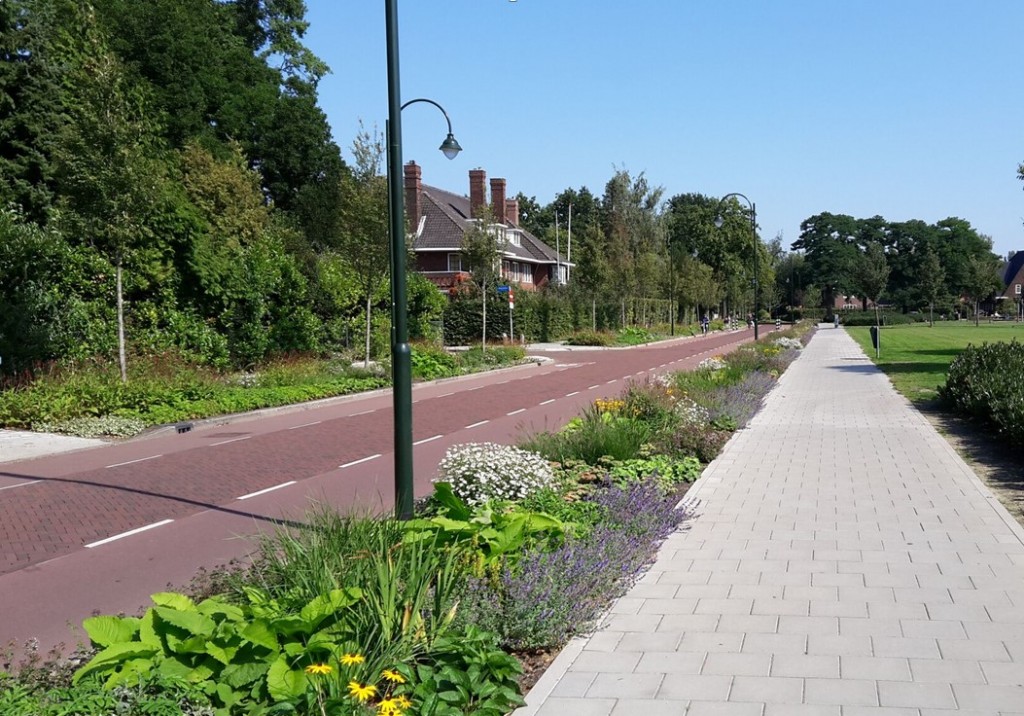 ab project. Green roofs and green facades will be created, together with the owners of the buildings, and their effect on heath stress will be measured. A nice side effect of NBS is that it will make a city more attractive and the liveability will increase. All the projects (demonstration areas) will be designed together with stakeholders and experts.
ab project. Green roofs and green facades will be created, together with the owners of the buildings, and their effect on heath stress will be measured. A nice side effect of NBS is that it will make a city more attractive and the liveability will increase. All the projects (demonstration areas) will be designed together with stakeholders and experts.
In the desired future scenario of the Roadmap Smart urban spaces of Eindhoven within R4E, one important element is a pleasant living environment, an improved liveability of the city. The UnaLab project will help to reach the desired future scenario.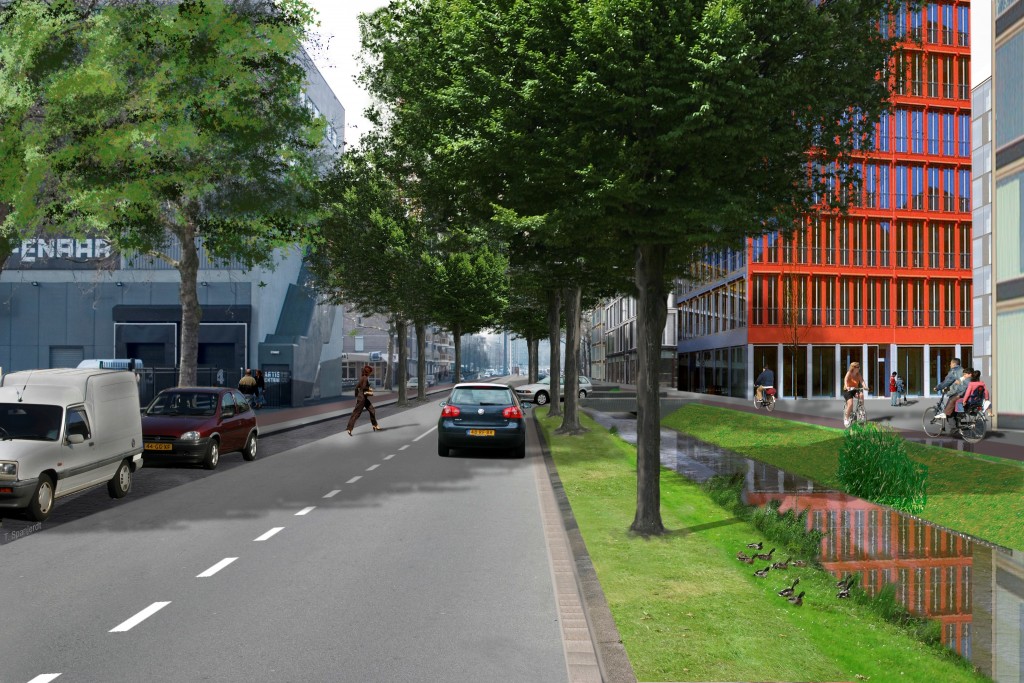
Written by Ir. Luuk POSTMES
Climate & Water expert
Municipality of Eindhoven
CRESCO Award “Sustainable Cities” 2016- PALERMO
CRESCO Award “Sustainable Cities” 2016- PALERMO
The City of Palermo was awarded a special prize instituted by Enel for ”Sustainable energy services Innovation in urban areas” for the year 2016. About 340 municipalities, in which live more than 12 million people, took part to the competition, divided in various categories.
The Enel prize, (Enel is a company that distributes electricity throughout the country), is dedicated to the innovation of sustainable energy services in urban areas. The goal is to award the City who has undertaken the most interesting program of initiatives to integrate the intelligent use of energy and the development of services to improve the quality of life in urban areas. The City of Palermo won the Enel award 2016 for a project aimed to improve the energy performance of the municipal housing stock, making more efficient and rational energy consumption in buildings, and creating a positive environmental impact in terms of CO2 reduction.
Following the award, Enel proposed to the Sicilian Municipality the signing of a Memorandum that allows local administration to transform innovative projects in services for the territory and citizens using the technologies and know-how made available by the electricity company. The initiative is part of the European campaign “Sustainable living in cities”, launched last April by CSR Europe – the network promoted by the European Commission to implement the EU Agenda on Sustainability – to define effective models of multi-stakeholder partnerships for sustainable development of urban territories.
The awarded project has the title “ROADMAPS FOR ENERGY“, funded by the European Union within the framework of Horizon 2020. This program is aimed at identifying the programs and goals for sustainable development and the reduction of CO2 emissions within 2050 in some European cities. The project has a duration of three years and involves mainly the construction of a study activity and a coordinated planning between European cities, to define a project “portfolio” with particular reference to energy efficiency in buildings and sustainable mobility.
Other European cities participating in the project are: Eindhoven, Murcia, Tallinn, Forli, Istanbul, Newcastle, Sant Cugat and Palermo.
For the City of Palermo the mail office are involved in tha activities are: Environment Office, Technology Innovation Office, Extramunicipal Funds Office, School Buildings Office and the Department of Education.
In particular, ENEL has awarded the City of Palermo for the idea of building a “Strategy for Energy Efficiency”, contained in the Sustainable Energy Action Plan (approved by the European Commission in 2015), which covers both the municipal organization, both the energy efficiency of municipal buildings, and public training and awareness on the issues mentioned above. This can be summarized in the following steps
- Establishment of an energy management system in compliance with UNI CEI EN ISO 50001, and the appointment of an Energy Manager;
- Energy Catasto realization of municipal buildings and an energy audit campaign, with particular reference to school buildings;
- Analysis of energy consumption of municipal housing and identification of energy and environmental performance indicators for the identification of energy efficiency priority
- Energy audit realization in public buildings with particular reference to school ones
- Realization of interventions of maintenance and of monitoring of energy consumption and of the energy produced by existing photovoltaic systems, aimed at maintaining the production of electrical energy from renewable sources
- Energy efficiency of municipal buildings
- Energy certification of municipal buildings and the realization of the first “plate energy”
- Dissemination of information on energy efficiency projects in school buildings, such as “pilot projects” reproducible in other buildings
- Realization of audiovisual and educational books produced for the implementation of training programs and promotion of renewable energies in the municipal schools
- Dissemination among citizens of the city of Palermo and other European cities of the SEAP actions and drafting of a project portfolio for Palermo in 2050.
Sustainable and smart mobility plans of Murcia
Sustainable and smart mobility plans of Murcia
The Official College of Industrial Engineers of Murcia, COITIRM, held on 6th April 2017 a seminar to discuss the Energy Plan of the Region of Murcia within the framework of the Forum of Innovation and Impulse to Renewable Energy in the Region of Murcia, INNPULSA 2017. For this occasion the College wanted to have the saying of the Murcia city council in order to know firsthand what will be the actions planned to promote sustainable and smart mobility in our city and what is the energy impact that urban mobility has within the modern cities.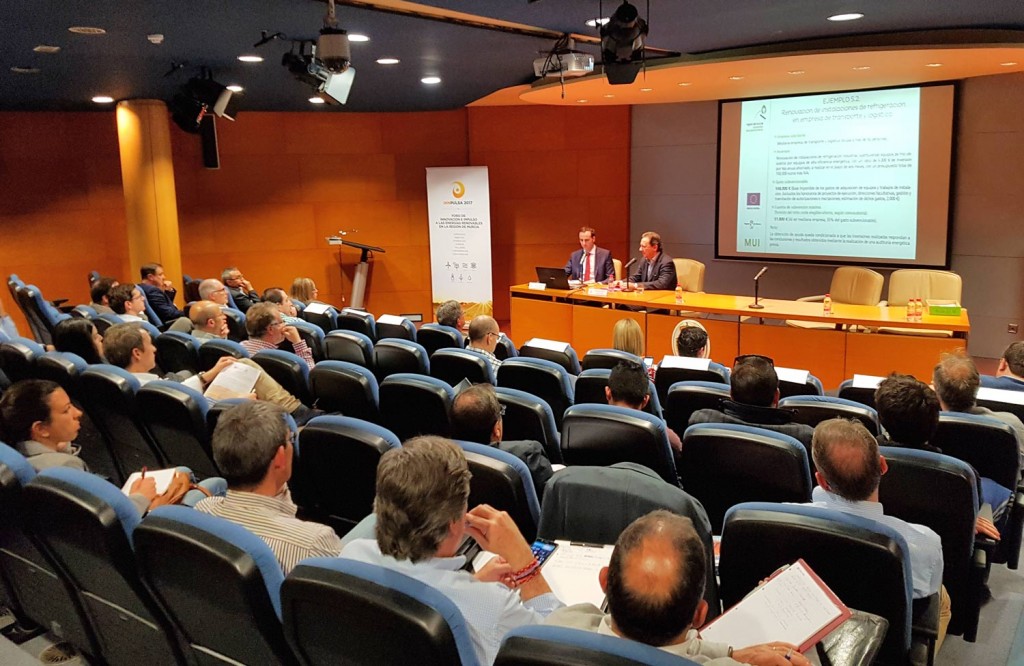
ALEM, the Local Energy and Climate Change Agency of the City of Murcia, under the Department of Urbanism, Environment and Huerta, directed by Antonio Navarro Corchón, was in charge of offering a complete vision of the Municipal actions in the matter of sustainable mobility, and it underlined the benefits that large municipal projects such as the Murcia Bike Lane project, the Local Electric Vehicle Strategy or the pedestrianization of the Avenue Alfonso X will report to the city. ALEM also took this opportunity to explain in detail the prospects and ambitions of Murcia regarding the smart mobility and introduced the “Roadmaps for energy (R4E)” project. Moreover, the key aspects of the project were presented as well as the methodology that the partners have followed to develop their roadmaps in the 3 focus areas of the project (smart buildings, smart mobility and smart urban spaces). In fact, the e-mobility strategy for Murcia has been one of the first outcomes of the R4E project in Murcia and will be the ground for other initiatives related to electro mobility in the city.
It is noteworthy that all these projects have in common with the Energy Plan of the Region of Murcia that have been addressed and raised from participatory processes, they all have an integrative sense and have tried to involve civil society to meet the different needs and visions of the citizens of Murcia.
Tallinn Main Street
Tallinn Main Street.
For decades urban planning in Tallinn has been focused on motorised vehicles, mainly the private car. This has resulted in a congested, unpleasant and unsafe city centre for the people. Now, with Estonia’s centenary in 2018 and its presidency of the EU in the end of 2017, the city aims to change this notion by starting with the city centre and creating a 21st century Main Street.
 Visualisation of the design ‘Spring in the city’
Visualisation of the design ‘Spring in the city’
Until recently city planners have added roads and widened streets in order to accommodate the increasing number of cars. Pedestrians and cyclist have been mostly allocated the narrow strips of streets that are left between buildings and car lanes. With the Project of the Main Street we will create a people-friendly 1,5 km stretch in the centre of Tallinn. The goal is to transform the heart of Tallinn from a transport corridor to a buzzing space with its own identity and street culture – a space for meeting and spending time, not just a busy thoroughfare for cars that citizens and tourists alike try to avoid.
 Visualisation of the design ‘Spring in the city’
Visualisation of the design ‘Spring in the city’
By prioritizing public transport and increasing the pedestrian zones, the mobility of pedestrians and non-motorised vehicles will be improved. It will also mean fewer cars in the city centre, which will contribute to a decrease in traffic noise and improvement of air quality. In a few years the Main Street will also link the Old City Harbour with the city centre, making the seaside more easily accessible and turning the city into a true coastal city.
 Visualisation of the design ‘AUL’ – how to connect the Main Street with the sea
Visualisation of the design ‘AUL’ – how to connect the Main Street with the sea
The design competition, organized by the Estonian Centre of Architecture, took inspiration from sustainable city planning solutions in other European capitals, such as Berlin, London, Stockholm and Helsinki. The winning team in the design competition is led by Toomas Paaver from Linnalahendused, in cooperation with Kavakava Architects. Their project is called “Spring in the City”, which aims to highlight missing sections of the Bastion belt that used to surround the Old Town centuries ago, when Swedes ruled the capital.
 Visualisation of the design ‘Spring in the city’
Visualisation of the design ‘Spring in the city’
The process of the Main Street project hasn’t been a smooth ride and a lot of efforts in communication have been made to inform the public about the benefits of such an endeavour. In 2015 there were 497 passenger cars per 1,000 inhabitants in Estonia, meaning city planning has mainly focused on creating a smooth traffic flow that’s comfortable for the drivers. Although the Main Street isn’t directly banning cars, a lot of car owners have expressed their concern about the project. However, more and more people are excited about the new Main Street, including local business owners, who expect increased sales with more pedestrians in the area. As Tallinn residents, we look forward to the new Main Street – a more vibrant city, with cleaner air to be enjoyed on foot.
Hyperloop proponents interested in Helsinki-Tallinn undersea route
Could Hyperloop be the next step towards Tallinn achieving their R4E objectives?
Hyperloop proponents interested in Helsinki-Tallinn undersea route
Hyperloop One is interested in the proposed undersea connection between Helsinki and Tallinn. A pod travelling at airplane speeds would reduce travel time between the two cities to just six minutes, and building it would be cheaper and could be done sooner, the company argues.
Vice president of Hyperloop One, Alan James, was in Estonia last week to introduce the project. According to him, their high-speed pod would be a perfect fit for the proposed connection across the Gulf of Finland. The connection could become the infrastructure project of the 21st century and had the potential to change the economic and political geography of this area, James said.
Hyperloop One could build this connection faster, better, cheaper, and more environmentally friendly, he added.
EU provides €1 million for Tallinn-Helsinki tunnel feasibility study
The Estonian transit sector is carefully interested, though they are not convinced that Hyperloop’s schedule is realistic. “If we’re only talking about passenger transport, then this is a very serious alternative to a tunnel between Tallinn and Helsinki,” CEO of AS Tallinna Sadam, Valdo Kalm, said. This mainly because the diameter of Hyperloop’s tube was much smaller than that of a railway tunnel, and because such a tube would likely be much cheaper to build.
“If we’re talking about getting to Helsinki in six minutes, I would extend this in the direction of Stockholm,” Kalm added.
At the same time, there is plenty of skepticism, especially where moving cargo is concerned. “Large goods will never be moved around by Hyperloop, or mass goods, there are so many technical reasons for that, and also financial ones, that won’t happen, so the railway isn’t out of the picture just yet,” transit expert and former chairman of the supervisory board of AS Eesti Raudtee, Raivo Vare commented.
According to Jüri Lavrentjev of the Tallinn University of Technology, there are additional problems. Beyond the fact that plenty of technological issues are not yet solved, there is also the aspect of security. If something were to go wrong in a Hyperloop tube, it would be a difficult problem getting to the passengers and rescuing them.
Tesla and SpaceX founder Elon Musk was one of the first supporters the project, which is currently looking for a first route. Hyperloop One has previously presented a first business case for a Stockholm-Helsinki connection that would reduce travel time between the two capitals to just 30 minutes. Other routes have been discussed, in Russia, China, and the United Arab Emirates as well as in other locations in Europe.
So what is a hyperloop?
In Musk’s words, a hyperloop is a system to “build a tube over or under the ground that contains a special environment.” Cars would basically be propelled in this tube. One example could be a huge sort of pneumatic tube where high-speed fans would compress and push the air — although the friction implications make Musk skeptical that it would work. Another option is having a vacuum in the tube and using electromagnetic suspension instead. Musk acknowledges it is hard to maintain a vacuum (one small leak in hundreds of miles of tubing, and the system shuts down), but there are pumping solutions to overcome this. He favors the second solution.
1) The passenger capsules aren’t propelled by air pressure like in vaccuum tubes, but by two electromagnetic motors. It is aimed to travel at a top speed of 760 miles per hour.
2) The tube tracks do have a vaccuum, but not completely free of air. Instead, they have low pressure air inside of them.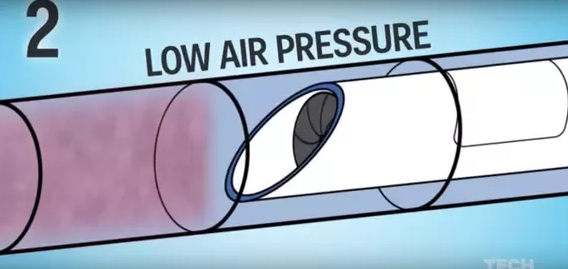
Most things moving throughairtubes will end up compressing the air in the front thus, providing a cushion of air that slows the object down. But the hyperloop will feature a compressor fan in the front of the capsule. The compressor fan can redirect air to the back of the capsule, but mostly air will be sent to the air bearings.
3) Air bearings are ski like paddles that levitate the capsules above the surface of the tube to reduce friction.
4) The tube track is designed to be immune to weather and earthquakes. They are also designed to be self-powering and unobsrtuctive. The pillars that rise the tube abobe the ground have a small foot-print that can sway in the case of an earthquake. Each of the tube sections can move around flexibly of the train ships because there isn’t a constant track that capsules rely on.
And solar panels on the top the track supply power to the periodic motors.
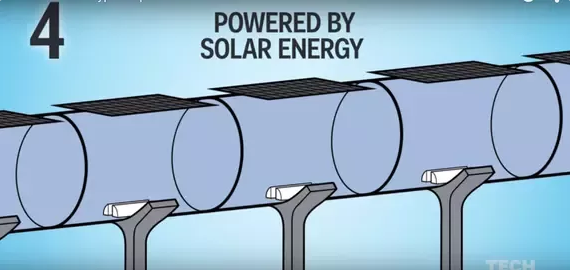
With these innovations and completely automated departure system, Elon Musk’s dreams of the hyperloop being the fastest, safest and the most convenient form of travel in the world.
Sources:
http://news.err.ee/200725/hyperloop-proponents-interested-in-helsinki-tallinn-undersea-route
https://www.quora.com/What-is-the-Hyperloop-How-does-it-work
Murcia in the 5th European E-mobility stakeholder Forum
Murcia in the 5th European E-mobility stakeholder Forum
Murcia participated on 23 & 24 march 2017 in the 5th European E-mobility stakeholder Forum in Brussels. The City of Murcia, represented by ALEM, the Local Agency for Energy and Climate Change, was invited to participate in the session called “Local strategies and policies to support E-mobility”.
The organization recognized the great work done to develop the recent E-mobility strategy of the city of Murcia and was his author, Jaime Ruiz Huescar, the responsible of introducing it to the attendees in this session. As he stated, this strategy can be described as an innovative and integrative policy commitment that is focused on the specific needs of the citizens of Murcia and represent the most important milestone made in Murcia in terms of promoting the Electro mobility so far.
The City of Murcia has been working intensely since September 2016 in the development of this Strategy and it was in that month when the draft document was presented in a public event where many different stakeholders were called, such as car dealers, associations related to the sustainable mobility and various experts in the field. This event also meant the kick off of a participation process aimed to enrich and complete the draft document of the e-mobility strategy.
This process allowed the municipality firstly to request the collaboration of experts in sustainable mobility and the citizens of Murcia to assess the 33 measures included in the document and secondly to invite them to propose new measures and ideas for the implementation of these actions. The period of collection for contributions, their analysis and final wording of the document concluded in March 2017. The city of Murcia, through ALEM, will present in May the final document and the first measures to be implemented in order to foster and support the deploy of the electric vehicle in our city.
The 50 measures included in the strategy are the most important milestone with regards to policies of support to the electric vehicle realized until now in Murcia. Among these first measures of urgent implementation we can mention the creation of an EV charging network on the public road, the reservation of exclusive parking spaces for electric vehicles and exemption in the payment of the regulated municipal parking, measures that are already being studied by the department of Urbanism and Environment.
During this session, Jaime Ruiz also gave the key aspects of the “Roadmaps for energy” project and explained that the involvement of the Municipality in the project has triggered the development of the e-mobility strategy as the most important step taken towards smart mobility during the last years in Murcia.

